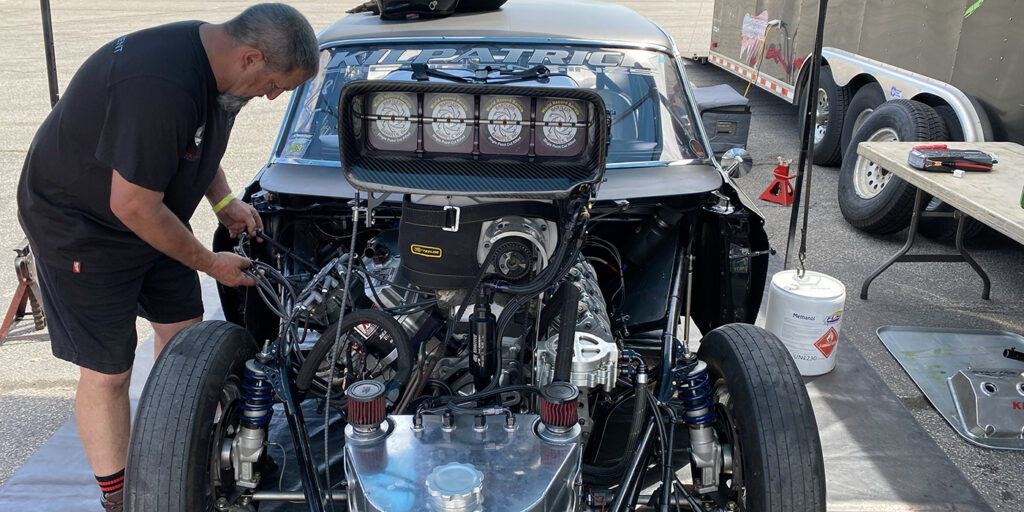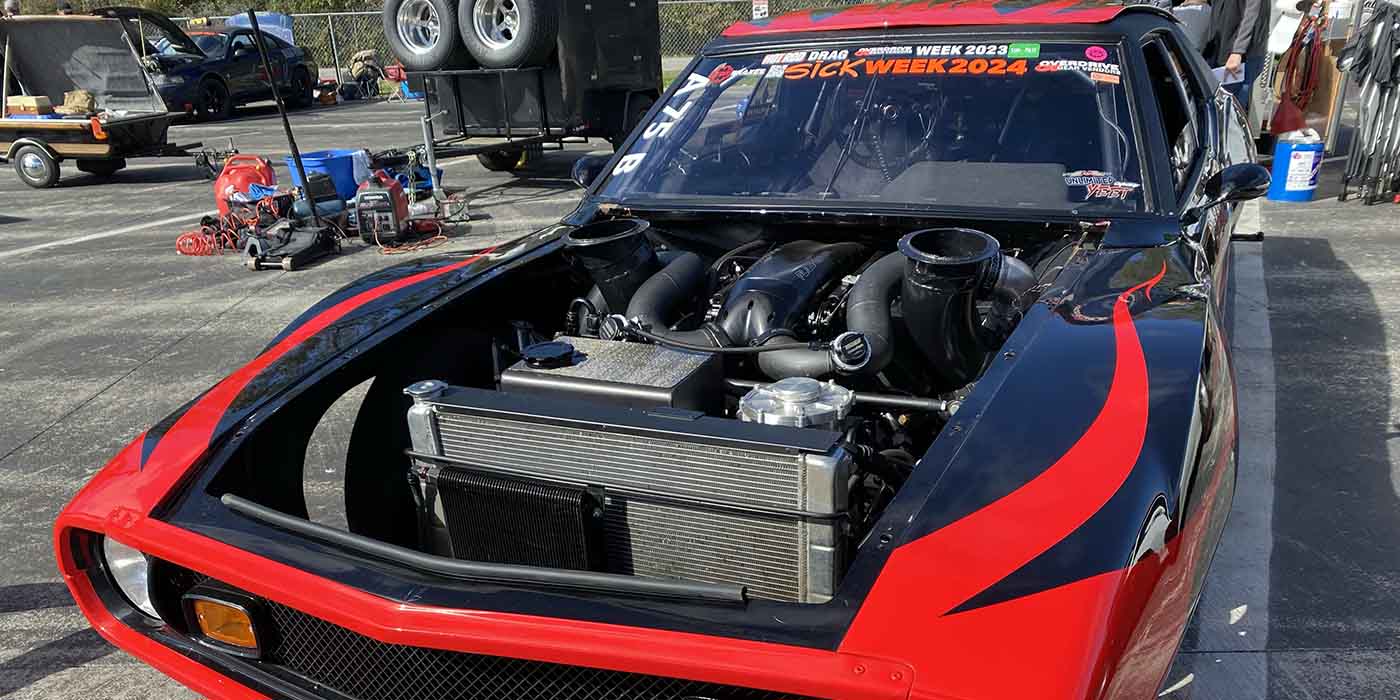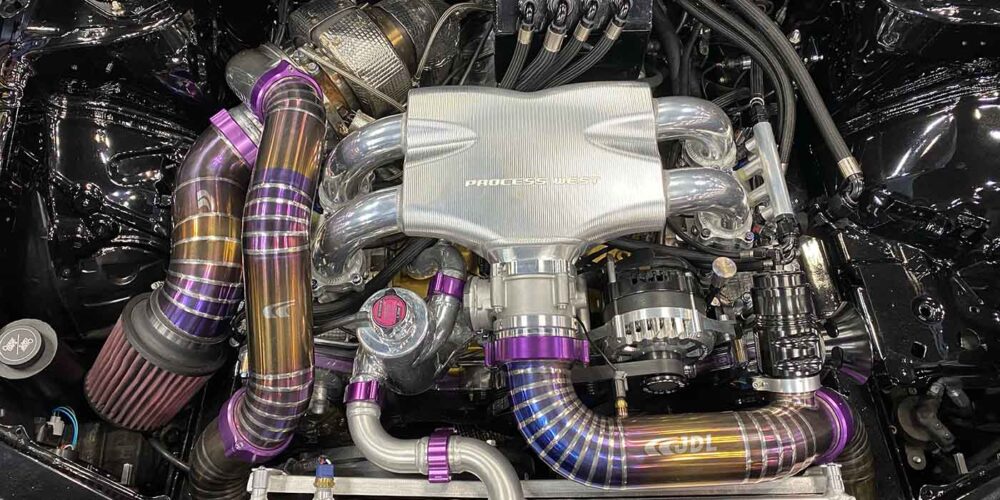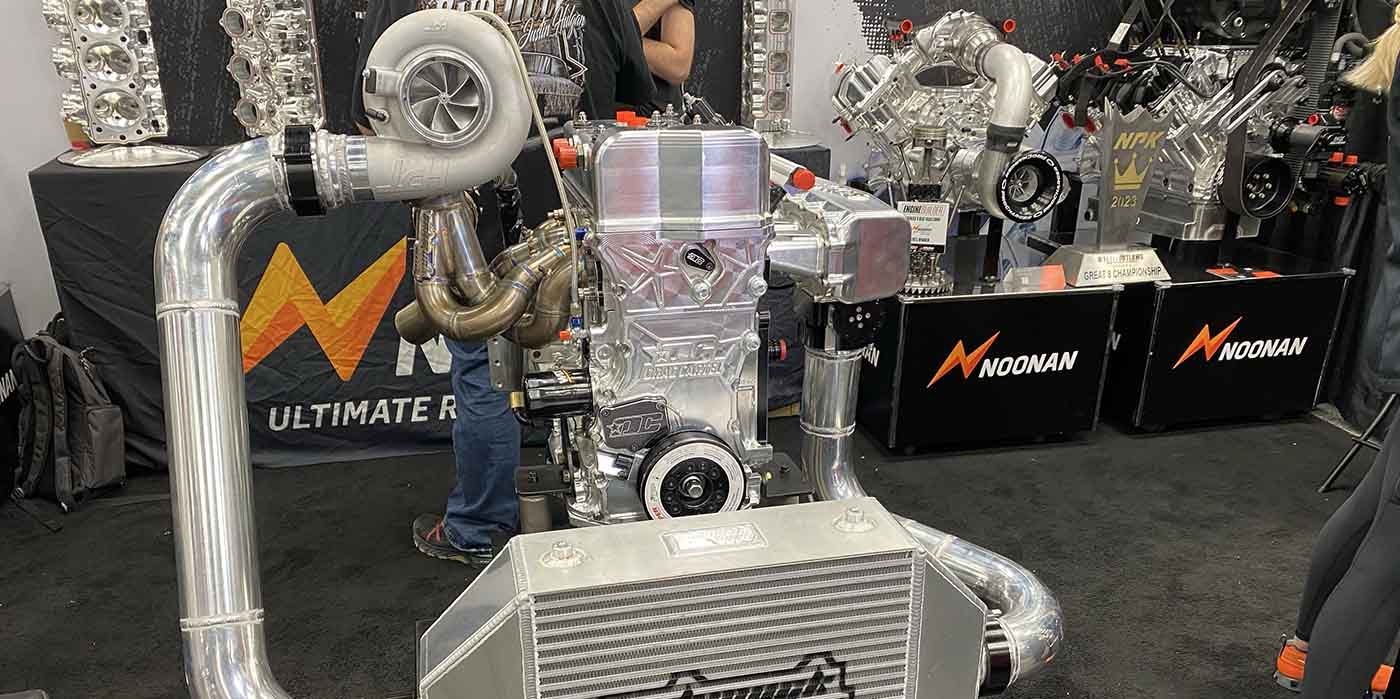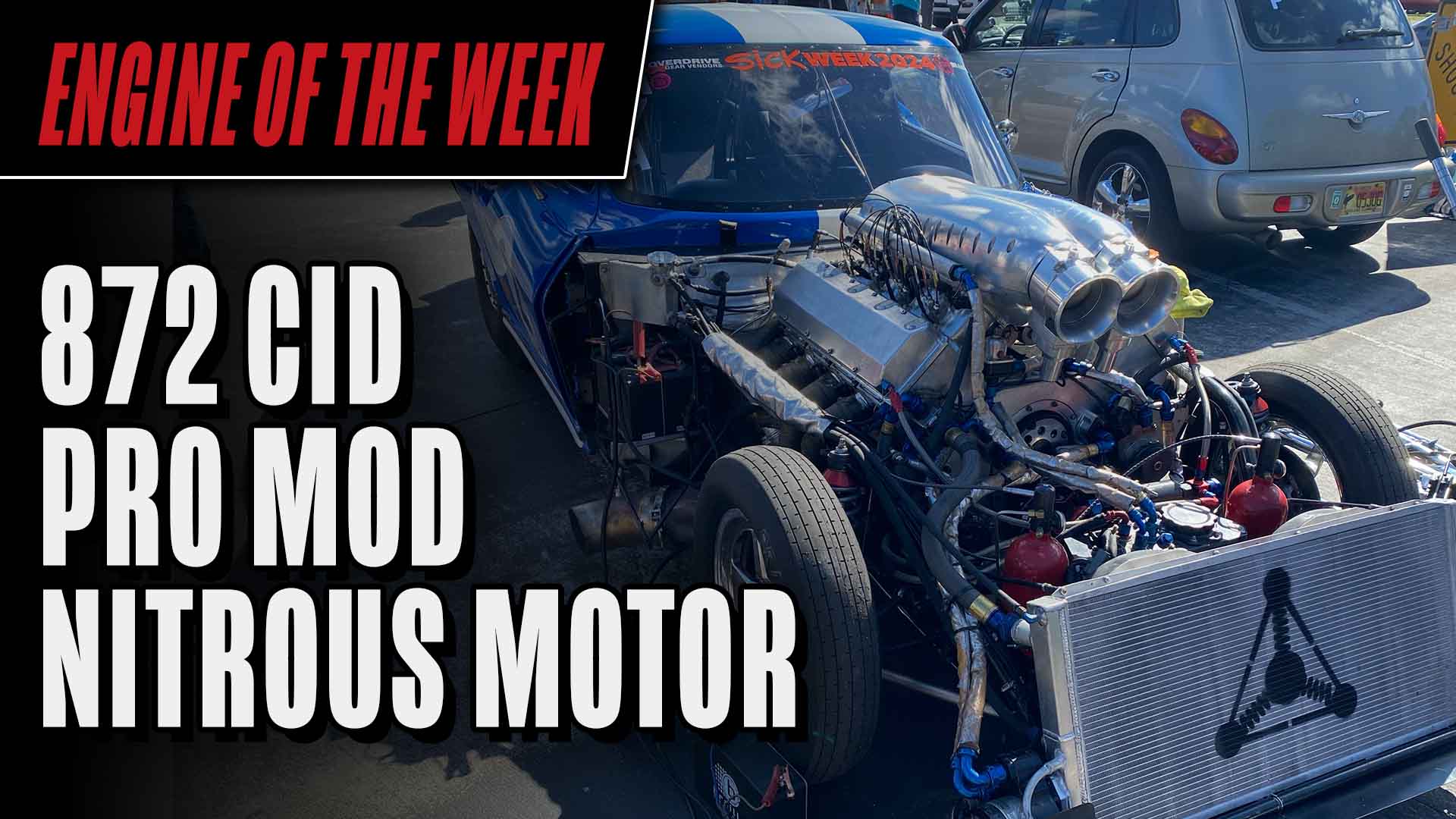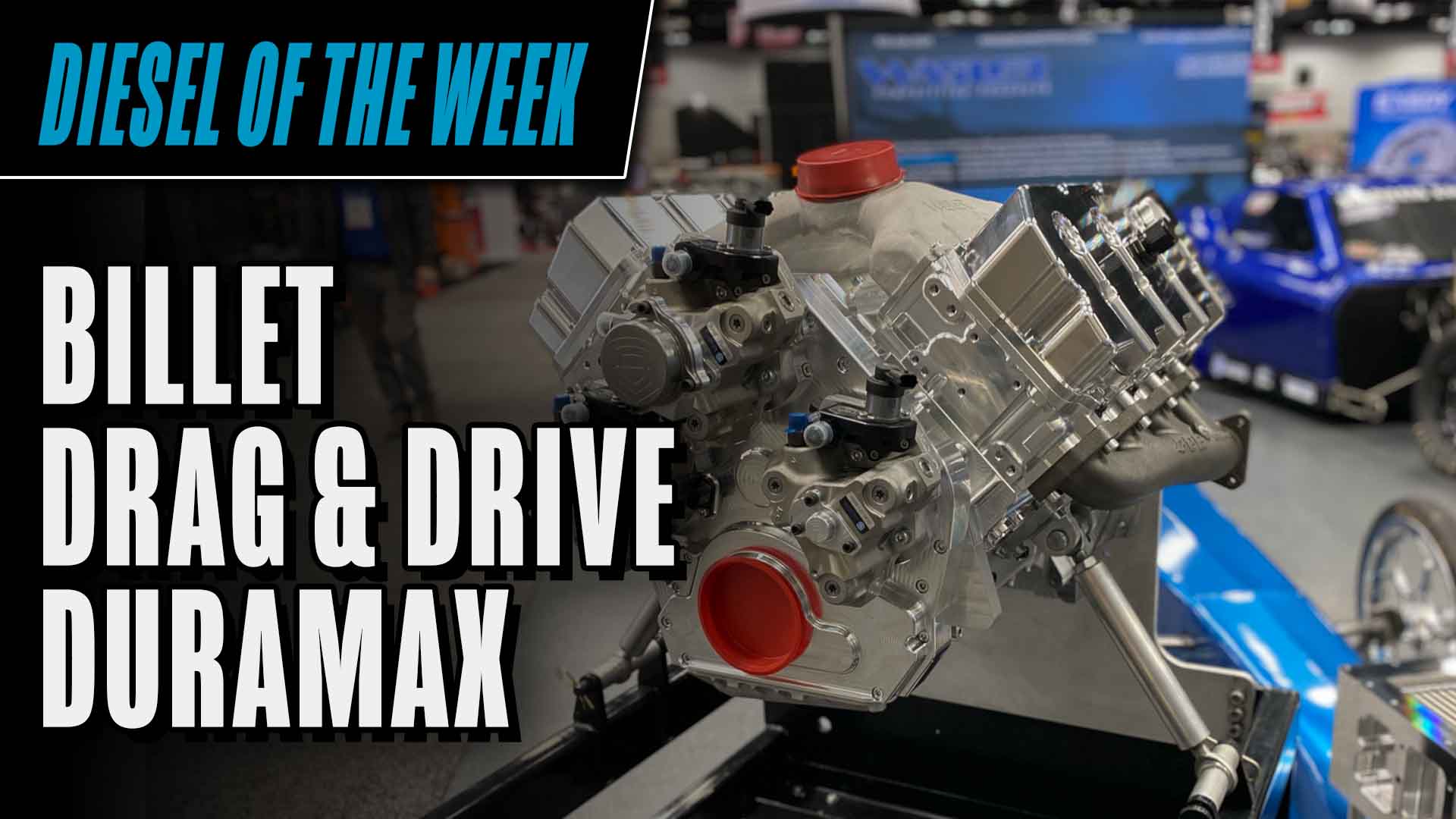Engine of the Week is presented by



During the test and tune on the first day of the 2022 Builder’s Brawl, we got front and center at the starting line of World Wide Technology Raceway as members of the media. That gave us one of the best seats in the house to see competitors such as Jim Kilpatrick and his car, Bad Judgement, hit the track. It was also a seat that, after Jim’s alcohol-fueled, screw-blown, 521 cubic inch Hemi engine hit the line, left us with our ears ringing a bit. It was the loudest burnout of the evening! It also left us eager to know exactly what was inside that screw-blown Hemi setup.
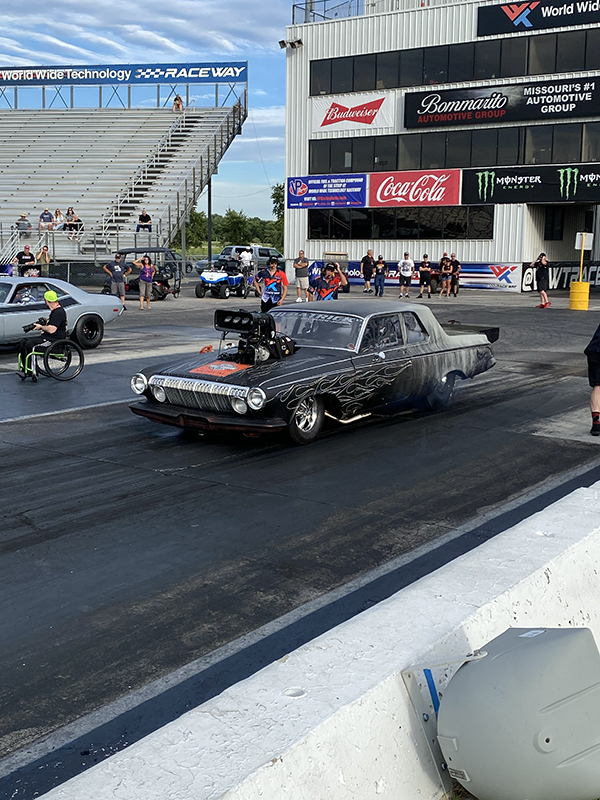
The next morning, we made a B line to the Kilpatrick Racing Engines / Bad Judgement Racing pit area to find Jim and his crew wrenching on the Hemi. Thankfully, Jim took a few moments to speak with us, and gave us a crash course on building proven, drag racing horsepower. His shop, Kilpatrick Racing Engines, is based out of Waukesha, WI, and is a full machine shop capable of doing just about everything in-house, including machining and assembling the 521 cid Hemi seen inside Bad Judgement.
The race team, Bad Judgement Racing, was formed by Jim and Dennis Stegall in 1995. The car, which carries the same name as the race team, is a 1963 Dodge Polara with a 521 cubic inch screw-blown Hemi engine that runs on alcohol.
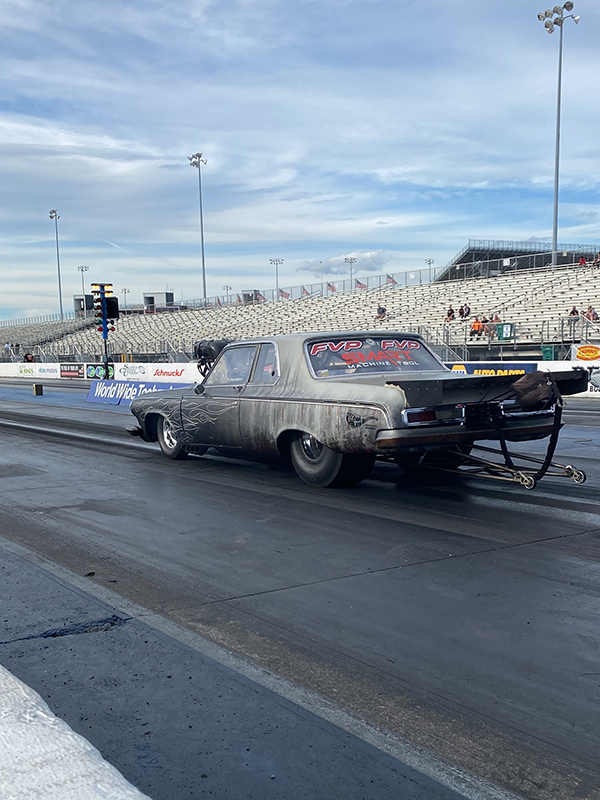
“This is the loudest car on the property,” Kilpatrick told us after we mentioned getting knocked back the night before. “The screw blower was our latest edition on this. We had always run a 14-71 hi-helix blower on it that made roughly 35-lbs. of boost and took about 300 horsepower to drive through the belt. That’s where you’ll see the difference; on the big, huge drive belts on the roots blowers. The screw blower is so efficient, it only takes 40 horsepower to run and it can make 60-lbs. of boost. The roots would typically start to lay over a little bit at 8,500 rpm and you would start to pull fuel away with a high-speed lean out on it. The screw blower just builds boost and keeps building it, so there’s no fuel being pulled away on the top. It needs it all because it’s blowing more air in it.”
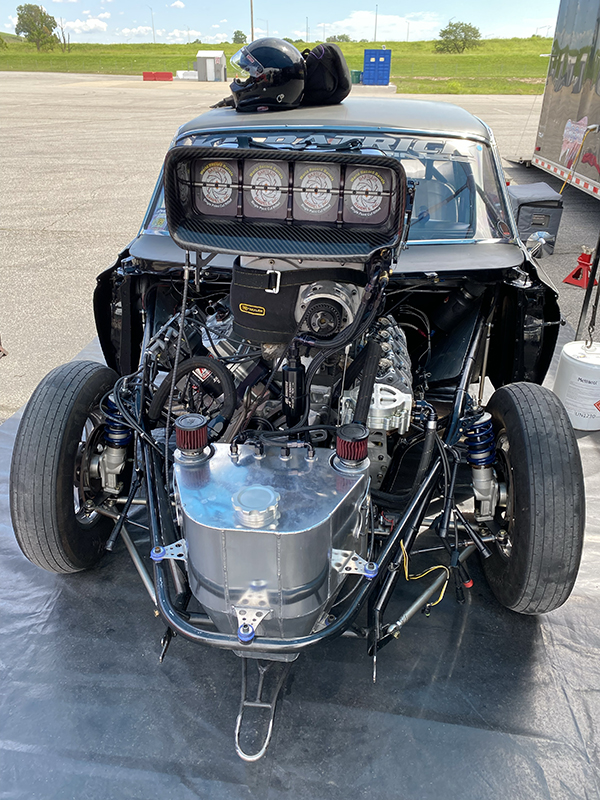
Jim went on to tell us that the block is from Brad Anderson Enterprises and is a low-deck Hemi. The reason for a low-deck Hemi is because the ports in the cylinder head are so high that you use a standard-deck intake manifold on a low-deck block and it makes the whole combination work.
“The high-port Hemi head is an amazing thing because of the flow characteristics of it,” Kilpatrick says. “This engine in an alcohol Funny car, they run to about 11,500 rpm. We shift this one at 10,000 rpm. We’re trying to save valve springs and be easier on the engine parts and so forth. But, we still do put bearings in it after every four to five passes. The rod bearing really tells you the story of how your tune up is, and it tells you if there’s a timing problem or a fuel problem, so we’re really looking at that bearing and measuring the width of the bearing to see how it’s getting pounded. This engine does use a very soft M series bearing in it. The bearing is the sacrificial piece inside the engine. It’s made soft to take the abuse off the rod and the crank.”
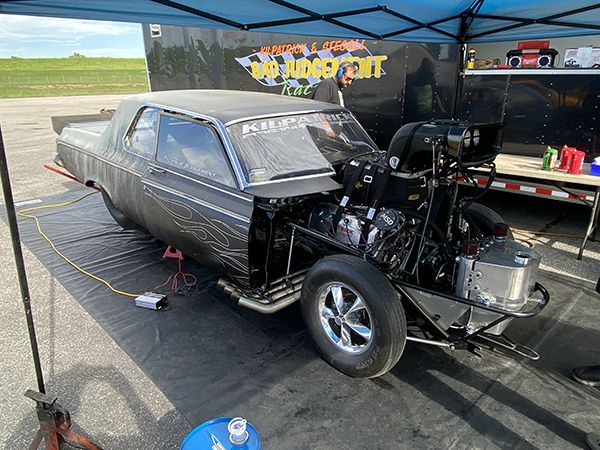
According to Jim, the crank is a 4.150” stroke Winberg billet crank, which is a lot less stroke than the old 526 Funny Cars had of 4.500”.
“That really allows the rpm to be there,” he says. “It doesn’t quite build the torque that the other engine did, but man, it makes up for it on the top end big time.”
The Hemi also features a traditional magneto that’s tuned up to 56 amps, which will throw a 1-foot spark in open atmosphere. Therefore, Jim warned that you do not go around pulling plug wires off just looking for a miss, because they’ll find you laying in the parking lot somewhere. In fact, he said these magnetos are not sold to the general public for that reason.
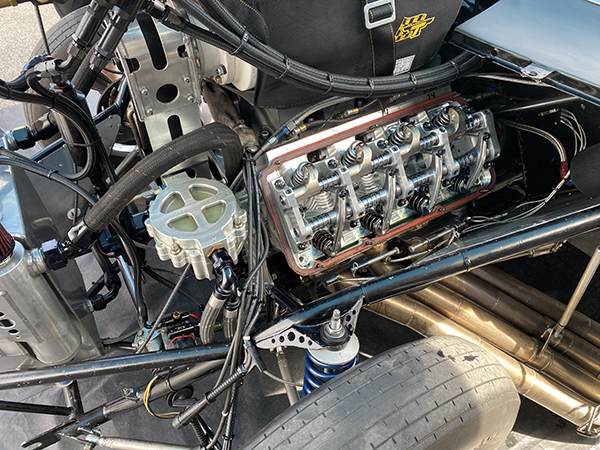
“It’s hard to believe we gap the spark plugs at .018” and there are times where it has a hard time firing an .018” gap under 60-lbs. of boost,” he says.
Aside from the Winberg crank, the rest of the rotating assembly on this Hemi engine includes billet R&R connecting rods with ARP 625 12mm rod bolts and Diamond pistons.
“If anything is going to fail in the bottom end, it’s the rod pulling itself apart and usually the bolt breaking, so ARP took it a step further and put in the biggest bolt in the industry for alcohol into these rods,” Kilpatrick pointed out. “We’ve always used Diamond pistons in it. This is pretty much a standard Funny car piston, so 4.467” bore and a 6.700” rod. It makes 11.5:1 static compression and you put 60-lbs. of boost on that, which you heard in your ears last night!”
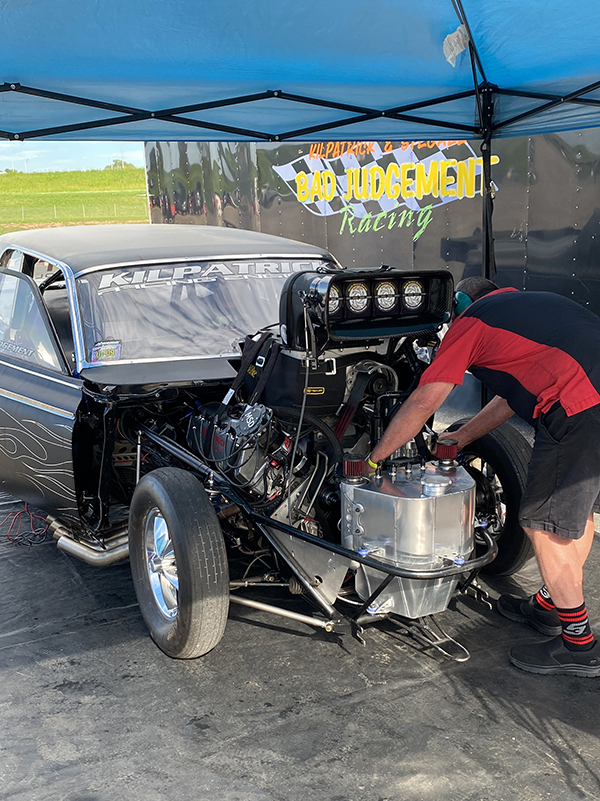
The 521 Hemi also got a recent cam swap, which has made a difference in the engine’s performance.
“When we set this up originally, we have a Funny Car racer in our area named Andy Bohl, and we’re able to buy his takeoff parts because when those guys find an extra 25 horsepower from a head change or something, they will never go backwards and use their old set of heads from last year,” he says. “This very block and one of the heads that’s on it right now, won Top Alcohol Funny Car in Indy in 2015, and now this is so old to them that they’d never consider using any of this stuff. For us, we can make an easy 4,000 horsepower from it. We’re able to take some of these used and battered parts and make them as good or better than new at our shop.
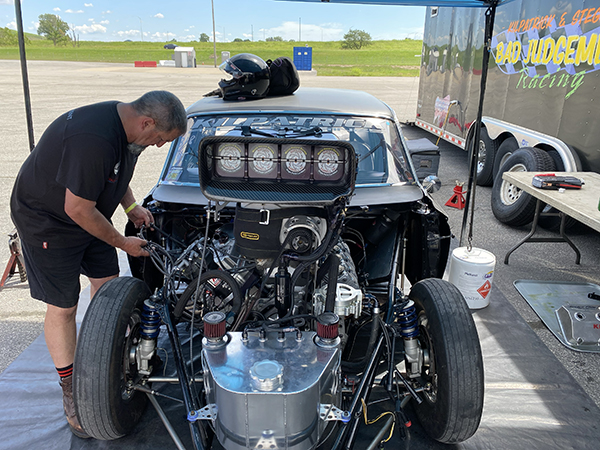
“We did some changes on the head as far as valve angle and so forth to find a little extra airflow. We had tooling made for our Sunnen seat cutter that will dial the valve seats in on this thing. It’s always a problem with these big valve springs. This uses a Manley valve spring on the intake side that’s 1,450-lbs. open. With 1” of lift and 10,000 rpm, you can imagine it’s a copper beryllium seat that’s in there, and it just gets hammered to death. Getting that machining on that valve seat just right is critical to making it seal, and when it seals, it makes power.”
The engine’s valvetrain also uses a Manton rocker setup, which is a little unique because it doesn’t use a roller on the exhaust tip, according to Kilpatrick.
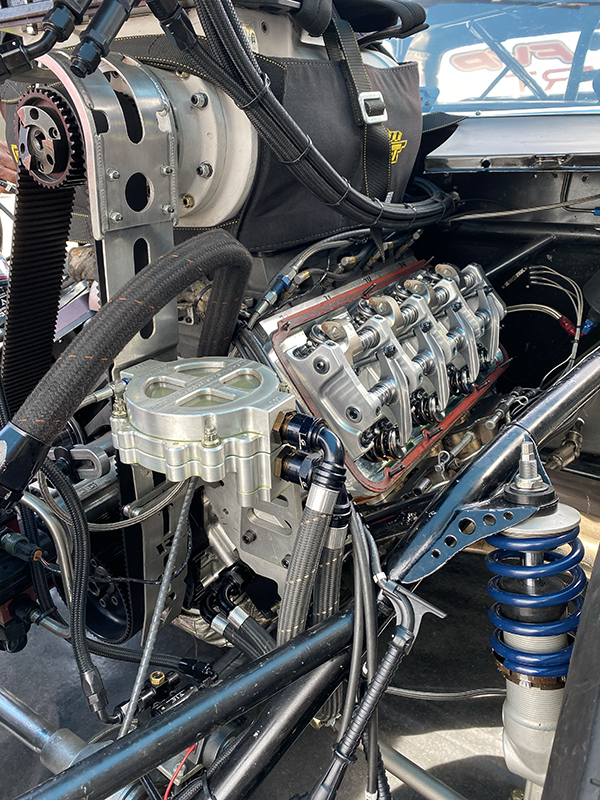
“The reason for that is basically it’s pushing straight on the exhaust valve,” he says. “It does not roll the rocker across the top of the valve the way the intake does. That’s a 1.9 ratio rocker with .520 cam lift on the nose of the cam. If you do the math, it’s just shy of an inch and when you see the way those valve springs get squashed when you’re setting the valves, it’s amazing that they live. The intake side gets changed every five passes. The exhaust side, we don’t care so much about – it’s just along for the ride. But, we did make tooling to be able to change the valve spring on the car, which is a three-man job to compress that spring on the car and be able to do that.”
For the engine’s oiling setup, Jim is running a Titan oil pump for a wet sump system with an accumulator.
“We like the accumulator so we can pre-lube the engine,” he says. “The accumulator also comes in handy when you pull the chutes and all the oil is at the front of the pan and the oil pressure basically goes to zero. The two ports in the accumulator are feeding the engine bearings while the engine is shut off. You shut these engines off with fuel and not spark, so when you’re driving it and come through the line and the chute is out, you’ll turn the fuel on and the engine will actually pick up. You can hear it get nice and clean right before it shuts off, because it’s leaning out and that way the cylinders are not all full of fuel. If you just clicked it off with spark, the whole engine would be full of fuel and we try to not do that to wash the rings and so forth.”
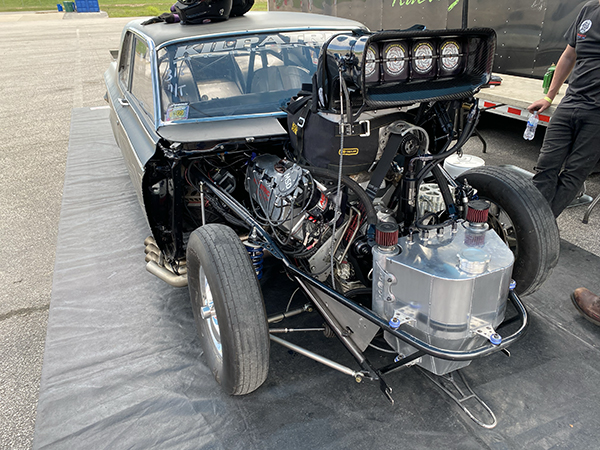
Jim also mentioned that alongside their alcohol race fuel they run a top end lube that is illegal in NHRA, but allowed in No Prep drag racing.
“The reason we like the lube is because behind the butterflies in the hat there are 24 injectors,” he pointed out. “We’re injecting the majority of the primary fuel, which is at idle, right through those 24 injectors and feeding the blower an icy fog. That makes for a happy screw blower. If you dry the blower out, the thing will destroy itself in a hurry. This combination really is the latest in technology for mechanical injection and it’s a bulletproof setup. It’ll actually frost this hat up when it’s idling, so you can tell it’s taking in some nice cool fuel.”
The screw blower is run at 92 over, which Jim said was roughly twice the crankshaft speed. Although it sounds pretty crazy, that’s how these screws run. You can run them 120 over typically in No Prep.
“We run it at about 3,500 horsepower,” Kilpatrick says. “We do have 500 hp in reserve. It’s all manipulated with timing with the power grid. In the old days, I did it all with fuel. Nowadays, we just do it with a stroke of a pen and a timing curve. Once the fuel is set on these, you pretty much leave them alone and do everything through timing. That’s how traction and track conditions can be set way more accurately than we could in the old days.”
Outside of the Hemi engine, the car features a manual Lenco transmission because Jim has always liked the hot rod look with Lenco levers inside, so that’s what Bad Judgement has always had and is always going to have.
“You steer it with one hand and shift it with the other and hang on for the ride,” he says.
As far as the Builder’s Brawl competition itself, Jim was competing in the Big Tire class, and he was thoroughly impressed by his fellow competitors.
“The competition that’s here this weekend and just seeing what was coming up through the staging lanes gave me my old love for drag racing back, because seeing all this stuff and all the different combinations that these guys all build, just like us, and having them all run as fast as they were last night – we’re excited,” he says. “In Big Tire, there are some damn fast cars, but this one will be right there with them. The driver is going to have to be on the tree. This is an instant green tree at this track. These No Prep guys are savvy and there’s no screwing around on the starting line. They get up and they’re ready to run, and that’s what makes us love this kind of racing.”
Us too Jim, us too. Just make sure you have your ear protection!
Engine of the Week is sponsored by PennGrade Motor Oil, Elring – Das Original and Engine & Performance Warehouse Inc./NPW Companies. If you have an engine you’d like to highlight in this series, please email Engine Builder Editor Greg Jones at [email protected].

